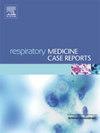Tuberous sclerosis-associated pulmonary lymphangioleiomyomatosis: The role of pulmonary rehabilitation - A case report
IF 0.8
Q4 RESPIRATORY SYSTEM
引用次数: 0
Abstract
Lymphangioleiomyomatosis (LAM) is a rare lung disease that primarily affects women. A patient with a medical history of Tuberous Sclerosis-Associated Lymphangioleiomyomatosis (TSC-LAM), a prior thyroidectomy for thyroid cancer, chronic hypertension, and a previous pulmonary thromboembolism was admitted to the hospital. Following the stabilization of her clinical condition, diaphragmatic exercises and incentive spirometers were implemented. This intervention significantly enhanced her respiratory status, prevented the need for invasive mechanical ventilation, and expediting pulmonary functional recovery. While further studies are needed, pulmonary rehabilitation has the potential to influence the clinical course of TSC-LAM patients in the ICU by improving respiratory capacity and reducing hospitalization time.
结节性硬化症相关肺淋巴管瘤病:肺康复的作用--病例报告
淋巴管瘤病(LAM)是一种主要影响女性的罕见肺部疾病。医院收治了一名有结节性硬化症相关淋巴管瘤病病史(TSC-LAM)、曾因甲状腺癌接受甲状腺切除术、慢性高血压和肺血栓栓塞的患者。在她的临床状况稳定后,医生开始对她进行膈肌锻炼并使用激励肺活量计。这一干预措施大大改善了她的呼吸状况,避免了有创机械通气的需要,并加快了肺功能的恢复。虽然还需要进一步的研究,但肺康复有可能通过改善呼吸能力和缩短住院时间来影响重症监护室中 TSC-LAM 患者的临床病程。
本文章由计算机程序翻译,如有差异,请以英文原文为准。
求助全文
约1分钟内获得全文
求助全文
来源期刊

Respiratory Medicine Case Reports
RESPIRATORY SYSTEM-
CiteScore
2.10
自引率
0.00%
发文量
213
审稿时长
87 days
 求助内容:
求助内容: 应助结果提醒方式:
应助结果提醒方式:


